22 Types of Trailers in the Trucking & Shipping Industry
Author: Omar Alonso | Editor: Omar Alonso
Review & Research: Jen Worst & Chris Miller
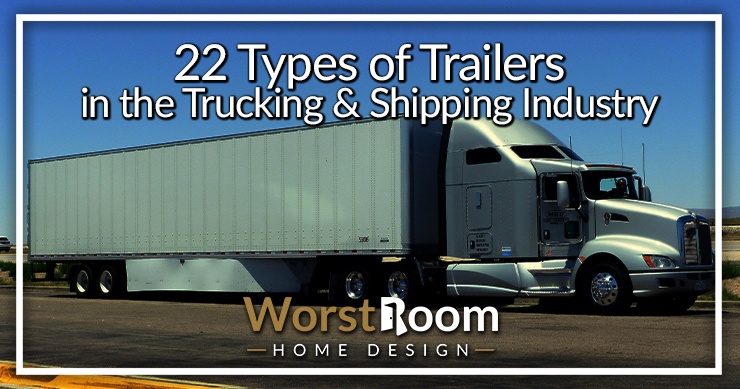
There are a lot of different types of trailers that are used to carry a variety of heavy-duty items. They are one of the most preferred ways of transporting freight. They make the whole operation of transportation cheaper and of course, create a lot of jobs.
Now, all trucks that carry heavy shipments need trailers, some open and some enclosed, to deliver the items safely at the destination.
22 Types of Trailers
Each of these truck trailer types has a specific purpose and a lot of thought has been put into their engineering. Let’s take a look.
Flatbed Trailers
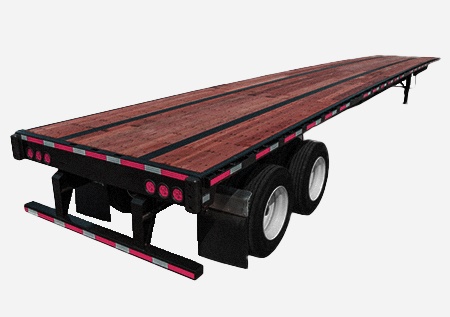
These are the most common types of trailers because they are highly versatile. Flatbed trailers are open from all sides and do not have a box that usually covers the load on the back of a trailer.
Since they are extremely common, they are used to transport a range of items from steel coils to lumber. And the best part is that it is very easy to load and unload these trailers. You can pick the load up with a crane from the top or a set of fork lifters from the sides.
Flatbed trailers can handle up to 48,000 pounds of weight. While the length of these trailers varies you can expect them to be anywhere between 24 feet and 53 feet. However, 48 feet flatbed trailers are very common.
The accepted legal width of these trailers is 8.5 feet and the allowed height is the same. The trailer itself is typically about 60 inches from the ground. Now, because there is no cover on top of the load, those who use these trailers regularly use a tarp on top.
It can be a bit difficult to cover a flatbed trailer with a tarp and you need to take precautions but we will deal with that some other day. We often see cars being transported in these trailers.
Extendable Flatbed Trailers
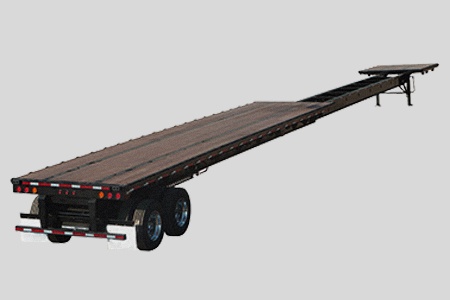
As the name suggests, these are flatbed trailers with the possibility of an extension. And for that reason, their length is not fixed but the rest is pretty much the same as a regular flatbed trailer.
These trailers can be extended up to 80 feet in length and are open at the back where the load is supposed to be placed. The extended length gives the users the option of adding extra load that is too big for a regular flatbed trailer.
To extend the bed of the trailer, a pin is used at the release point of the two sections.
Dry Van or Enclosed Trailers
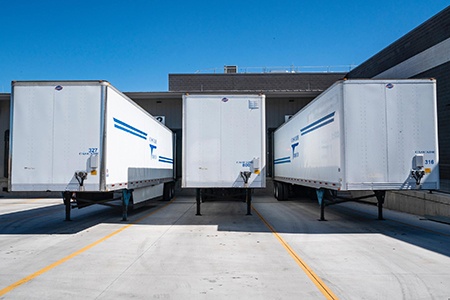
These are enclosed types of trailers, unlike the flatbed variety. So, it is like a flatbed trailer but with a box that covers the load on the bed of the trailer. Enclosed trailers are also used to transport a range of tools like band equipment and are quite common.
These are also relatively affordable and provide extra security to the load that is being transported. We have all seen these on the interstate, nearly every time we're driving.
The covering also protects the materials that are being transported from harsh weather. And you do not have to worry about the extra cost of tarps.
Now, you can use the space in enclosed trailers to make shelves and other storage cabinets. For those looking to invest in a trailer, know that you cannot really go wrong with this variety.
The legal weight limit on enclosed trailers ranges from 42,000 pounds to 45,000 pounds. They are typically 48 to 53 feet in length and can be loaded from the front and the sides.
Refrigerated Trailers
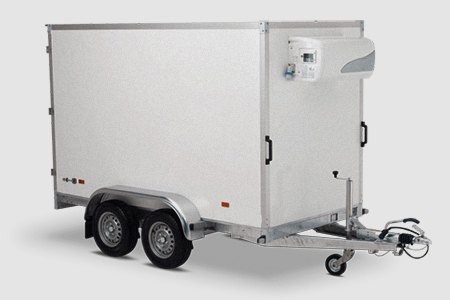
Refrigerated trailer styles are used by, you guessed it, distributors of objects that need to have temperature control.
That applies to frozen food companies, ice cream makers, and pharmaceuticals too because they cannot be exposed to heat and sometimes need to be protected from direct sunlight.
These types of trailers are essentially like enclosed trailers in appearance but come with proper insulation and types of air conditioners to protect the materials inside.
They often contain a compressor, a condenser, and an evaporator within the cooling system container. The maximum length of these trailers is legally limited to 8.2 feet and the legal height limitation is eight feet. These are basically like dry and enclosed cooling vans.
Lowboy Trailers
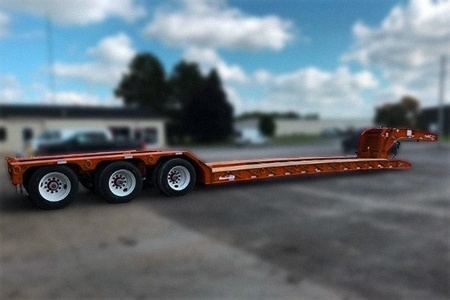
Also referred to as low beds, low loaders, floats or double drops, lowboy trailers are semi-trailers that have a drop deck. That is because they have two drops in the deck behind the gooseneck and the other is just before the wheels.
These trailers are very close to the ground and the drop helps them carry extremely big items like heavy-duty construction equipment like bulldozers and excavators. Basically, when the legal limit of the other trailers disqualifies them, lowboy trailers come into the picture.
So for obvious reasons, their permitted legal height is more than the other trailers. That is at 14 feet and the weight limit including the two axles is at 40,000 pounds but it can be increased to 80,000 pounds.
In that case, the number of axles also changes for safety reasons. Of course, you will have to get additional permits before you can send a lowboy with that much load on the road.
Step Deck Trailers
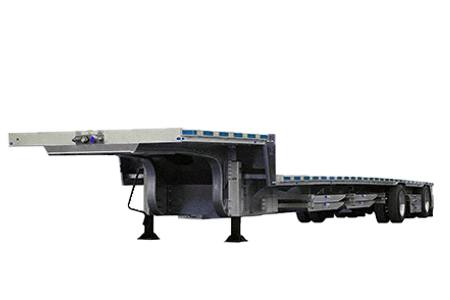
This is another type of trailer that is quite similar to flatbed trailers except there is a difference in the maximum legal height between the two models.
Unlike flatbed types of trailers which are at 60 inches from the ground, step-deck trailers are closer to the ground because they carry loads that are taller than eight feet.
Step-deck trailers are also used to transport items that cannot be shipped using a flatbed trailer because of height restrictions. Like flatbeds, these are also open trailers and have two decks.
You have probably seen them carrying multiple automobiles in movies if not in real life. The items are unloaded using a ramp but a forklift is safer because of the proximity to the ground.
Stretch Single Drop Deck Trailers
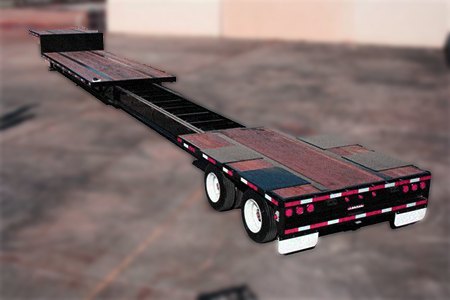
Stretch single drop decks are like step-deck trailers but with an extendable bed. These are specialty items that are used when the load is too big for a step-deck model.
Along with allowing the transportation of longer loads, these trailers provide extra support. Their lower deck can extend up to 76 feet and the front deck is about 9.6 feet long.
These trailers are allowed a maximum load width of 8.6 feet and a maximum load height of 11.4 feet. The permitted weight is an impressive 44,000 pounds.
Hotshot Trailers
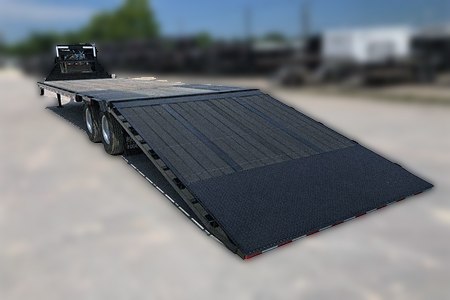
In the world of trucking, the term 'hotshot' refers to when you need to carry an expedited load very quickly to a location that's either remote or hard to reach.
What makes it hotshot types of trailers is when you've got a quick deadline and the roads are challenging, and it's all being done for one single customer, also known as the hotshot.
Hotshot trailers are 20-40 trailers that can handle mountainous roads with sharp turns. They can carry up to 18,000 pounds but usually the loads aren't quite that large, just urgent. They generally look like a step deck or flatbed trailer.
Extendable Double Drop Trailers
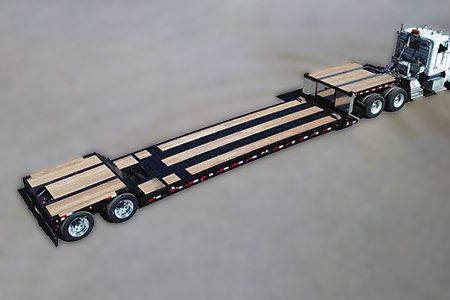
Extendable double drop trailer styles exist for one sole reason which is to carry loads that are so long that they can't be safely hauled on the normal double drop trailers. It's not about the weight or anything other than transporting unusually long loads.
The center portion of the stepped deck can be extended in the front-to-back direction to increase the length of the trailer bed. The height of the deck can also be adjusted to accommodate tall loads as well. The tallest objects would go on the lower deck.
What you need to know ahead of time is the weight capacity and maximum length, which are 40,000 pounds and 50 feet, respectively. The max width is 8.5 feet. You also gain a higher legal limit in height, where the freight can reach up to 11.6 feet tall.
Conestoga Trailers
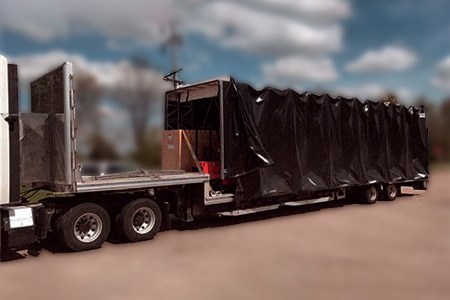
Visually you won't notice much difference between a conestoga trailer and a dry van trailer. The dry van trailers are the ones we're all used to seeing on the road, where the doors open from the back to load and unload the freight.
Conestoga types of trailers can be loaded from the front and sides as well because the walls and ceiling are built from a frame on a roller, with the bulk of the material being a very strong tarp material.
This frame can then be collapsed by rolling the front towards the back, giving access to the trailer bed from either side and the front. You can still access the cargo from doors on the back as well.
Less-Than-Truckload (LTL) Trailers
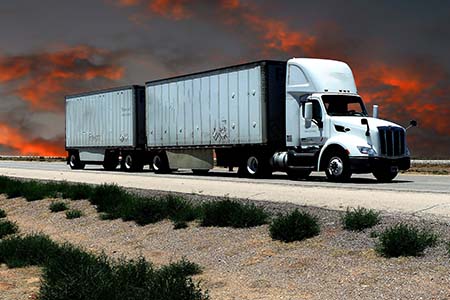
LTL shipping refers to cases when your freight shipments aren't quite voluminous enough to fill up an entire trailer. This mode of transportation allows multiple companies to combine their cargo into one truck for a cheaper and more efficient shipment for everyone involved.
Since goods will need to be loaded and unloaded multiple times, they generally will be packed on types of pallets or in crates for ease of use with forklifts. Often times these goods will move from LTL truck to LTL truck over their adventure.
These trailers are usually just your typical dry van enclosed trailer, but they're categorized differently based on the type of cargo they carry and have different weight limits due to the frequent loading and unloading.
Multi-Car Trailers
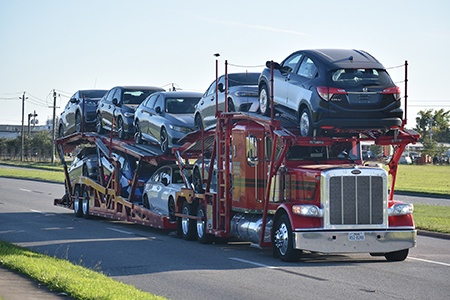
It's always a treat to see these on the interstate. Multi-car trailers do exactly what the name suggests, which is transport a bunch of cars, usually a maximum of 9, across the country. It take special care to drive these, sometimes requiring routes that don't have overpasses.
You'll find these in single decker and double decker trailer sizes, depending on how many cars need to be transported. The cars are always tilted at various angles and chained in, of course with all of their emergency brakes applied.
Oversized Trailers
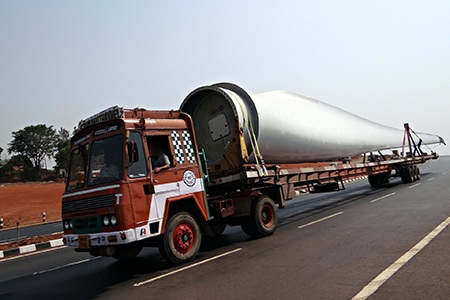
We mentioned the extendable double drop types of trailers above, where loads get too long to carry otherwise. Oversized trailers are similar in that they're meant to carry cargo that simply can't be split up into multiple shipments.
This means that either the cargo weight and dimensions, or both, exceed the legal limits but can't be managed in any other way. This qualifies them to be shipped on an oversized trailer, often accompanied by companion vehicles signalling that there's a wide load on the road, etc.
Hazmat Trailers
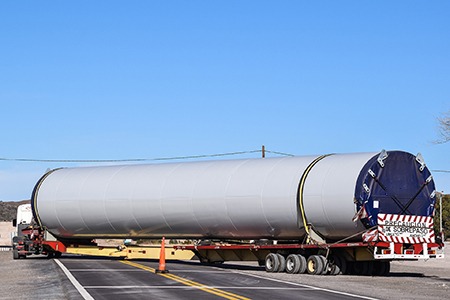
Hazmat is an industry term referring to 'hazardous materials'. A hazmat trailer is one that is carrying supplies that require very meticulous and careful handling because the supplies are dangerous or toxic if they spill.
These trailer styles help handle the increased safety rules and regulations. They can manage 80,000 pounds legally, are allowed to be 13 feet and 6 inches in width, and the maximum height of the trailer and the cargo combined is 8 feet and 6 inches.
Side-Kit Trailers
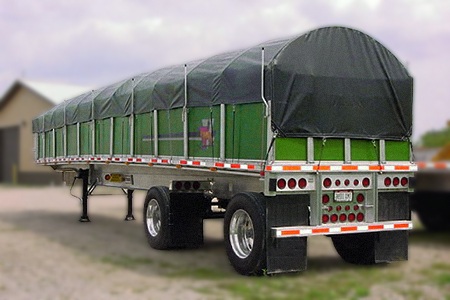
To best explain what a side-kit trailer looks like, imagine a flat bed trailer. Now imagine sides that are made of steel poles that mount down into the sides of the trailer bed, with the poles being connected by a very strong tarp material (or sometimes types of plywood or types of fiberglass even).
Finally, add a rounded frame on the top very much like the side poles, that is also connected by the same tarp material. This is a side-kit trailer. These sides and tented tops keep the weight down, but are also safe because there's no need for higher security for the goods.
That's because the goods are usually loose materials like crops, soil, coal, gravel, and other powders. The covering keeps the material safe from moisture and other contamination. Once delivered, the top can come off for scooping with cranes, and ultimately the sides can come off to unload the rest.
Side-kit trailers have fairly typical dimensions of up to 53 feet in length and 8.5 feet in width, with a maximum capacity of 45,000 lbs generally.
Removable Gooseneck Trailer (RGN)
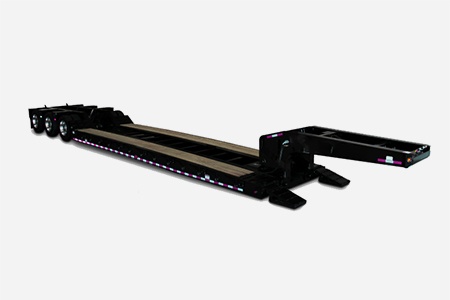
Moving huge pieces of equipment can be quite the task. You also need to get extra permits when you want to ship something larger and heavier than usual which is not a stress-free process. But that is a good time to get removable gooseneck trailers into the picture.
Also called a double lowboy or a double-drop trailer, these trailers hold the load closer to the ground which allows them to carry objects that are taller than usual.
The trailers have a drop in the middle where the taller objects must be placed. This region is called the well and is about 29 feet long. The raised beds must be used for items that are not very tall.
The well is quite close to the ground which means an object that is as tall as 12 feet can be placed on it and transported without the need for extra permits. That is not a loophole in the law that we want you to exploit. That is just why these trailers are built the way they are.
The gooseneck types of trailers also have a detachable front end which allows heavy items like bulldozers to drive directly onto the trailer.
After placing the object where you want it to be, you can attach the detachable portion. Which gives you the other advantage of gooseneck trailers: the ease of loading and unloading.
Stretch Removable Gooseneck Trailers
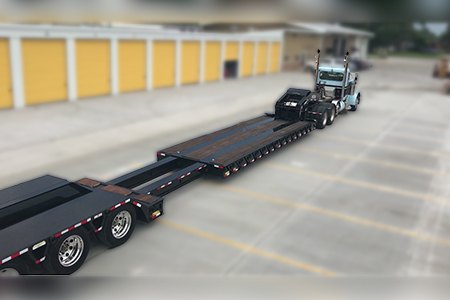
Like we have truck trailer types for excessively long cargo, we also have one for overly tall and heavy loads, too. This is the stretch removable gooseneck trailer, where the main deck can be extended from the typical 29 feet in length up to 65 feet.
The stretch detachable gooseneck trailer also increases the weight capacity over three multiples, from 42,000 pounds up to 150,000 pounds. The width and height regulations don't change from the standard 8.5 feet and 11.6 feet, respectively.
Since the loads can be incredibly heavy, extra wheels and axles can be attached to help distribute the weight more evenly and provide better balancing. And since they're so low to the ground it makes loading and unloading these heavy loads much safer.
Specialty Trailers
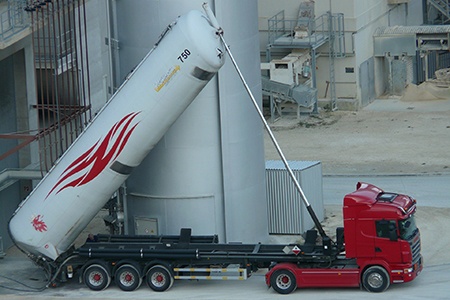
These are different types of trailers that are built for specific purposes, like the ones that are built to move a lot of liquid or offer medical services or food services.
Each of these trailers will have different requirements specific to the object they will be carrying. They need to be handled with the utmost care and expectantly, the trailer requires a special permit.
The driver also needs to have a special license which allows them to tow the object that is being shipped. Typically, specialty trailers are legally allowed to carry a weight of up to 200,000 pounds.
Medical Trailers
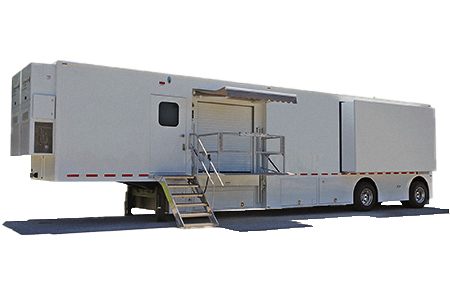
Medical trailers are pretty common now albeit very different kinds of trailers. They often contain various little offices in them to treat patients, for blood drives, and other basic uses or even during emergencies.
These are enclosed trailers, and will be wired up with electricity and sometimes water, will contain air conditioning, and of course require special permits to operate.
Vending Trailers
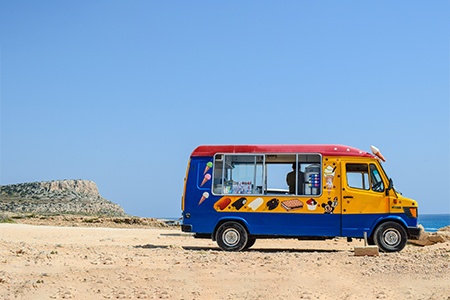
Much like food trucks, vending trailers are like mini-store fronts. One can carry all of their inventory already displayed in an attractive manner, pull up to a curb, and open the side and be ready to conduct business. You'll see these at sports stadiums selling apparel, for instance.
Food Service Trailers
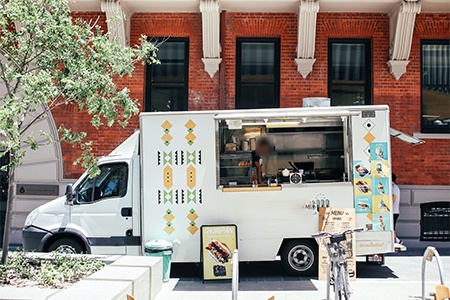
We're all familiar with food trucks now. Like those, food service trailers are full blown kitchens with several types of refrigerators, freezers, grills, microwaves, and more, all packed within a big trailer.
If you've been to a county fair you've seen dozens of these lined up selling all manner of food. When the evening is over, they're hooked back up to the truck and move on to the next fair. They're useful for catering events as well.
Display Trailers
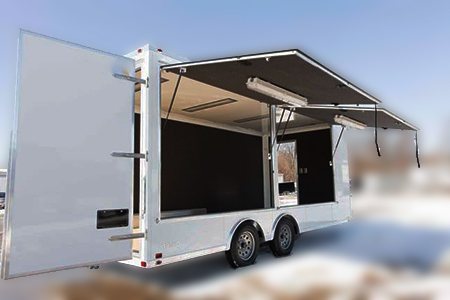
Sometimes called event marketing trailers, these trailer types are like mobile billboards which can be moved and parked at various approved locations. But like vending or food trailers, they can also act as offices to generate leads, have product demonstrations, and more.
Types of Trailers for Any Cargo Shipment
A trailer is mostly a bed that has a purpose and is attached to the back of a vehicle that has an engine. As mentioned before, each of them has a purpose and you must pick the one that works best for the shipment.
And remember that this is not really a process where you would want to think about saving money because the journey is usually long and any damage to your types of trailers will cost you a lot more than you planned to save.



